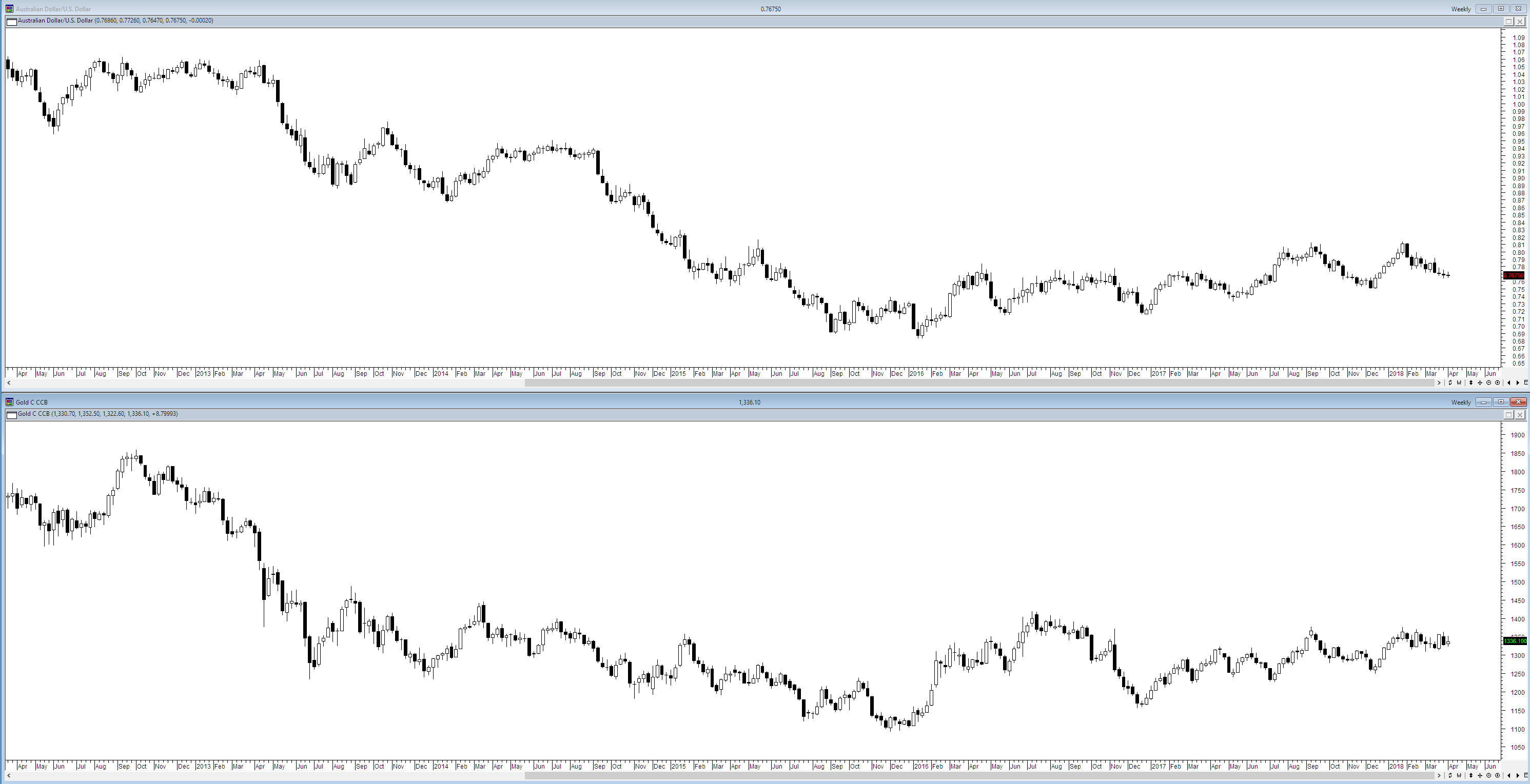I got an email over the weekend asking about the correlation if any between gold and the AUD and to be honest I didnt know if there was any relationship between the two other than the long bow stories generated by economists. So I decided to have look. Whenever you start to look at the relationship between instruments you need to first define what you are looking at. The email I got implied that they looked the same at present therefore this implied some form of relationship.
At a glance both instruments at present seemed to be forming some form of broad congestion but this raises the question as to whether this a relevant observation since it would be possible to find hundreds of instruments that currently displaying the same pattern. However, a simple analogy will suffice to put this into context. If you have two cars driving side by side down a road this does not imply that they have either come from the same place or more importantly mean that they are heading towards the same destination. Correlation between instruments is more nuanced than simply observing that they look the same. Correlation can be broken down into two parts, price correlation and returns correlation. Price correlation looks at whether prices move together with any degree of regularity and traders often stop their analysis here because they assume that if they move together then the impact of either an account or trading system will be the same. The issue with this is that it is not representative of the full picture. There is a second arm to correlations and this is the idea that returns between instruments can be correlated. It is important to note that it is possible for an instruments to have very high price correlations – in simple terms they look similar but have very different returns correlations. It is returns that matter to an account not whether something looks the same as something else.
When breaking down correlations I like to ask a simple question – what does the value of $1 look like if invested into each instrument since this takes into acocunt their differing historical returns and unpacks any link between these returns.
As you can see from the chart the trajectory of $1 invested into either instrument shows at times a wildly diverging path which was exacerbated during golds bull run from 2008 and this raises the question for traders as to which possible returns would you like to expose your portfolio to. The issue here is not so much whether instruments look the same and have the same set up but rather what potential impact will trading them have upon your account. It is also quite easy to understand the differing nature of these returns by reference to the environment within which instruments exists. Metals such as gold are free from Government interference – they can find their own level. Currencies are not free from such intervention, the fate of the AUD is intimately linked to Government policy and this ultimately puts boundaries around where the currency can go to. For example it is impossible for an currency pair to start its run at $0.75 and for it to be $7.50 three months later – this sort of move is the preserve of equities.
So outside of currently looking the same my answer to the question as to whether these two instruments share any meaningful connection for traders I would have to say no. There will also be someone who talks about the narrative behind the relationship between commodities and a given currency but my response to that is that this is an irrelevancy. Traders are not interested in stories or whether things look the same, they are or should be interested in returns.







